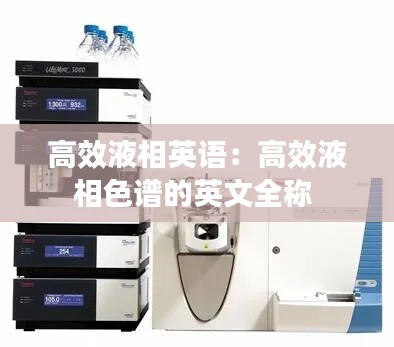Understanding High-Performance Liquid Chromatography (HPLC)
High-performance liquid chromatography (HPLC), also known as high-pressure liquid chromatography, is a sophisticated analytical technique used to separate, identify, and quantify components in a mixture. It is widely employed in various fields, including pharmaceuticals, environmental analysis, food science, and clinical laboratories. The principle behind HPLC is the differential partitioning of components between a mobile phase (liquid) and a stationary phase (solid), which allows for the separation of complex mixtures into their individual components.
Components of an HPLC System
An HPLC system is composed of several key components that work together to ensure accurate and efficient analysis. These components include:
The Injector: This device introduces the sample into the HPLC system. It can be either a manual injector or an automatic syringe injector, depending on the complexity of the sample and the desired throughput.
The Column: The heart of the HPLC system, the column is where the separation of components occurs. It is typically a long, narrow tube packed with a stationary phase material that interacts differently with each component of the mixture.
The Mobile Phase Solvent Delivery System: This system delivers the mobile phase at a constant pressure and flow rate, ensuring consistent separation conditions. It includes a pump, reservoirs for different solvents, and a gradient mixer if a gradient elution is required.
The Detectors: These devices detect and quantify the separated components as they elute from the column. Common detectors include ultraviolet (UV), fluorescence, diode array (DAD), and mass spectrometry (MS).
The Recorder: The recorder collects the data from the detectors and can be used to create a chromatogram, which is a graphical representation of the separation process.
Types of HPLC Techniques
There are several different types of HPLC techniques, each with its own advantages and applications:
Reversed-Phase Chromatography: The most commonly used HPLC technique, reversed-phase chromatography involves the use of a non-polar stationary phase and a polar mobile phase. This technique is particularly useful for separating non-polar and moderately polar compounds.
Normal-Phase Chromatography: In contrast to reversed-phase, normal-phase chromatography uses a polar stationary phase and a non-polar mobile phase. This technique is suitable for separating polar compounds.
Ionic Exchange Chromatography: This technique utilizes charged stationary and mobile phases to separate ions based on their charge. It is often used for separating charged compounds such as amino acids and nucleotides.
Size-Exclusion Chromatography (SEC): SEC separates molecules based on their size and shape, rather than their chemical properties. It is commonly used for characterizing proteins and polymers.
Affinity Chromatography: Affinity chromatography utilizes specific interactions between a stationary phase and a ligand or antibody to separate molecules. This technique is highly selective and is often used in the purification of proteins and antibodies.
Challenges and Advancements in HPLC
Despite its widespread use, HPLC faces several challenges. One of the main challenges is the development of new stationary phases that can efficiently separate a wide range of compounds. Another challenge is the need for high-resolution detection methods to accurately quantify trace levels of analytes. Over the years, several advancements have been made to address these challenges:
Miniaturization: The development of microfluidic devices has allowed for the miniaturization of HPLC systems, which reduces sample consumption and analysis time.
Automated Sample Handling: Automated sample handling systems have increased the efficiency and reproducibility of HPLC analyses.
Advanced Detectors: The development of new detectors, such as mass spectrometry (MS), has improved the sensitivity and selectivity of HPLC analyses.
Green Chemistry: The use of environmentally friendly solvents and stationary phases is becoming more prevalent, contributing to the sustainability of HPLC.
转载请注明来自戴码定制,本文标题:《高效液相英语:高效液相色谱的英文全称 》











 蜀ICP备2022005971号-1
蜀ICP备2022005971号-1
还没有评论,来说两句吧...